How to Train Your Dog to Walk Nicely on a Leash
Walking your dog on a leash is a great way to bond with your furry friend and provide them with exercise and mental stimulation. However, if your dog pulls, lunges, or drags you down the street, walking can quickly become a frustrating and unpleasant experience for both you and your pet.
If you’re struggling to get your dog to walk nicely on a leash, don’t worry – it’s a common problem that can be easily fixed with some patience and training. In this article, we’ll provide you with some tips and techniques to help you teach your dog to walk calmly and obediently by your side.
Why Training Your Dog to Walk on a Leash is Important
Training your dog to walk nicely on a leash is not just about preventing them from pulling you down the street. It’s also about teaching them good manners and keeping them safe. A dog that pulls on a leash is at risk of escaping and running into traffic or other dangerous situations. Additionally, an unruly dog can be a nuisance to other people and dogs in your community.
By training your dog to walk calmly and obediently on a leash, you’ll be able to enjoy more pleasant walks with your furry friend and reduce the risk of accidents or incidents. Plus, a well-trained dog is a happier and healthier dog!
Common Problems with Leash Walking
Before we dive into the training techniques, let’s take a look at some of the most common problems that people experience when walking their dogs on a leash:
- Pulling on the leash
- Lunging at people or other dogs
- Barking or growling
- Jumping up on people
- Ignoring commands
If you’re dealing with any of these issues, don’t worry – you’re not alone. With the right training and consistency, you can teach your dog to be a well-behaved and enjoyable walking companion.
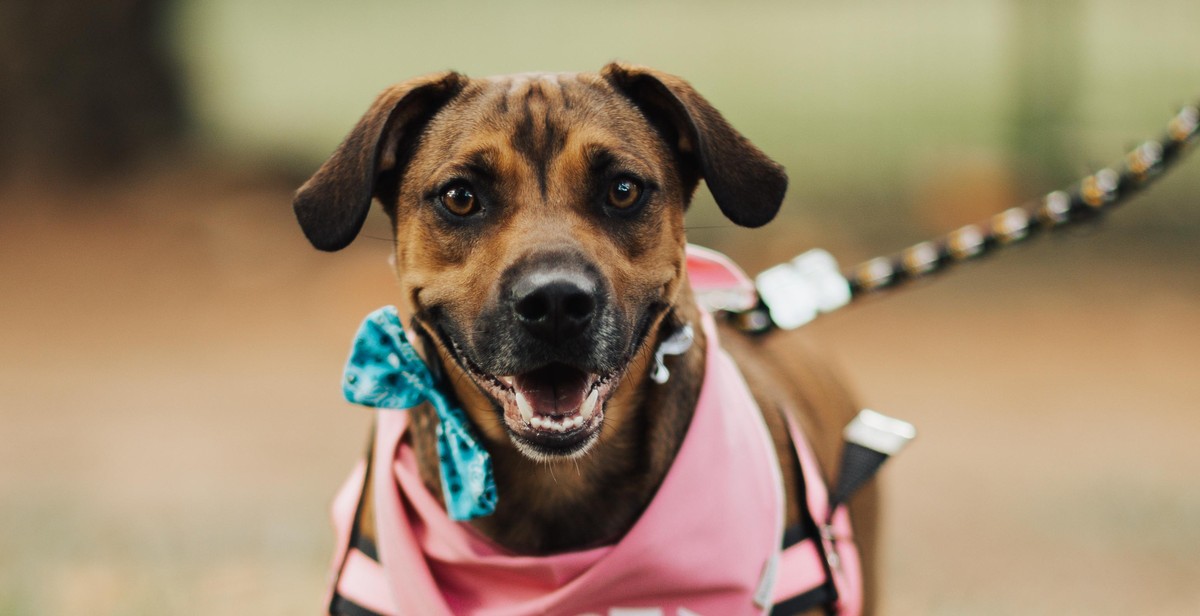
Why is Leash Training Important?
Leash training is an essential aspect of dog training that can help keep your pet safe and well-behaved. Here are the two main reasons why leash training is so important:
Safety
Leash training helps ensure your dog’s safety when you take them out for a walk. When your dog is on a leash, you have more control over their movements, which can prevent them from running off into traffic or getting into dangerous situations. Additionally, leash training can help you keep your dog away from other dogs or people who may pose a threat to their safety.
Leash training is especially important for puppies who are still learning how to behave in public spaces. Puppies are naturally curious and may try to explore their surroundings, which can put them in harm’s way. Leash training can help you keep your puppy close and under control until they learn how to behave safely in public spaces.
Behavior
Leash training is also an important aspect of dog behavior training. When your dog is on a leash, they learn to walk calmly and politely by your side. This can teach them good behavior habits that can carry over into other aspects of their life. For example, if your dog learns to walk nicely on a leash, they may also learn to behave well when meeting new people or other dogs.
Leash training can also help prevent your dog from developing bad behavior habits, such as pulling on the leash or jumping on people. By teaching your dog to walk calmly on a leash, you can help them learn how to behave well in public spaces and around other people and dogs.
Overall, leash training is an essential aspect of dog training that can help keep your pet safe and well-behaved. By taking the time to teach your dog how to walk nicely on a leash, you can help them become a happy and well-adjusted member of your family.
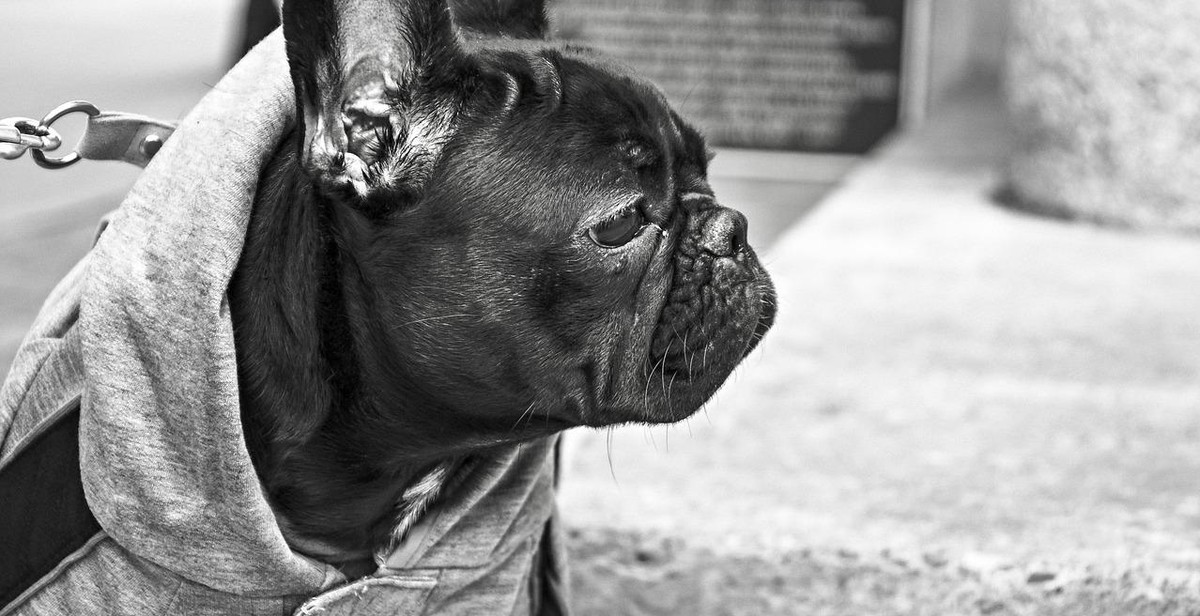
Choosing the Right Equipment
Choosing the right equipment is crucial when training your dog to walk nicely on a leash. The two main options are collars and harnesses.
Collar or Harness?
A collar is a common choice for many dog owners. However, it’s important to note that collars can put pressure on a dog’s neck and throat, which can cause injury or discomfort. This is especially true for dogs with respiratory issues or short snouts, such as pugs or bulldogs. If you choose to use a collar, opt for a flat or rolled collar made of soft material that won’t rub or irritate your dog’s skin.
A harness, on the other hand, distributes pressure across your dog’s chest and shoulders, which can be a safer and more comfortable option. There are several types of harnesses available, including front-clip, back-clip, and no-pull harnesses. Front-clip harnesses are great for dogs who pull, as they discourage pulling by redirecting your dog’s attention towards you. Back-clip harnesses are a good option for well-behaved dogs who don’t pull, while no-pull harnesses have a special design that prevents your dog from pulling.
Leash Length
The length of your leash can also impact your dog’s behavior on a walk. A shorter leash (4-6 feet) provides more control and is a good option for training, while a longer leash (6-8 feet) gives your dog more freedom to explore. However, it’s important to note that longer leashes can also increase the risk of tangling or tripping.
Ultimately, the choice between a collar or harness and a short or long leash depends on your dog’s individual needs and behavior. Consider consulting with a professional trainer or veterinarian for personalized recommendations.
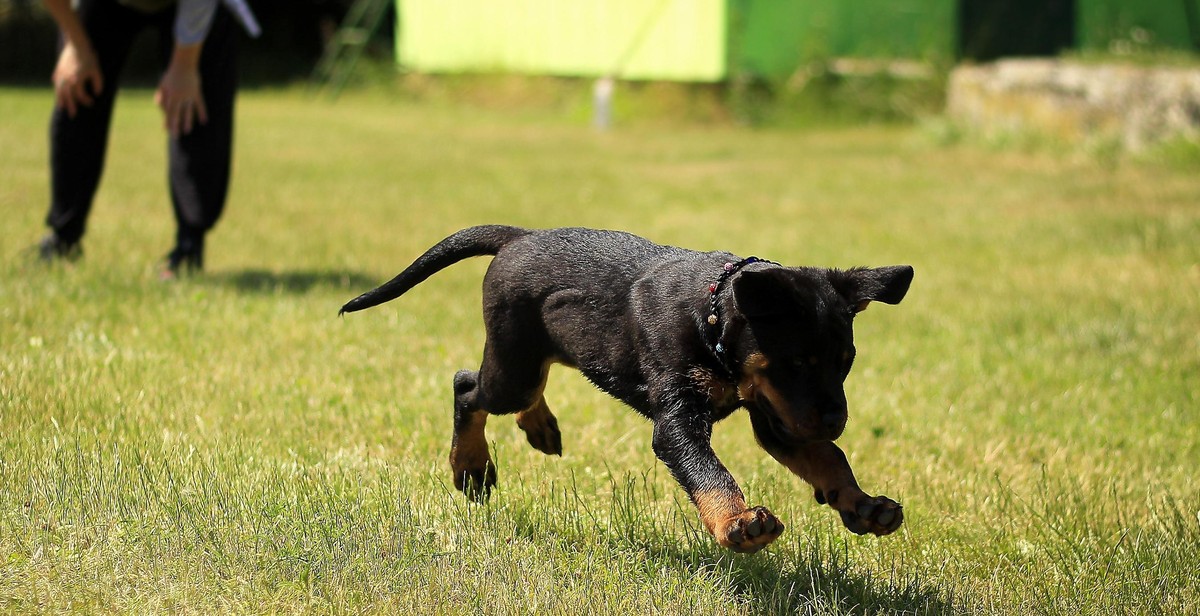
Starting Your Training
Training your dog to walk nicely on a leash is an important part of responsible dog ownership. Not only does it make walks more enjoyable for you and your furry friend, but it also ensures their safety. However, it’s important to start the training process in the right way to set your dog up for success.
Find a Quiet Area
When starting leash training, it’s best to find a quiet area with minimal distractions. This could be your backyard or a quiet park. By minimizing distractions, you can help your dog focus on the training and make it easier for them to learn.
Positive Reinforcement
Positive reinforcement is one of the most effective training methods for dogs. When your dog does something you like, such as walking nicely on the leash, reward them with treats, praise, or playtime. This will encourage them to repeat the behavior in the future.
Short and Frequent Sessions
Training sessions should be short and frequent, rather than long and sporadic. Aim for 10-15 minute sessions a few times a day. This will help your dog stay focused and prevent them from getting bored or overwhelmed with the training.
- Find a quiet area to start your training
- Use positive reinforcement to encourage good behavior
- Keep training sessions short and frequent
By following these tips, you can set your dog up for success in leash training. Remember to be patient and consistent, and soon your furry friend will be walking nicely on the leash.
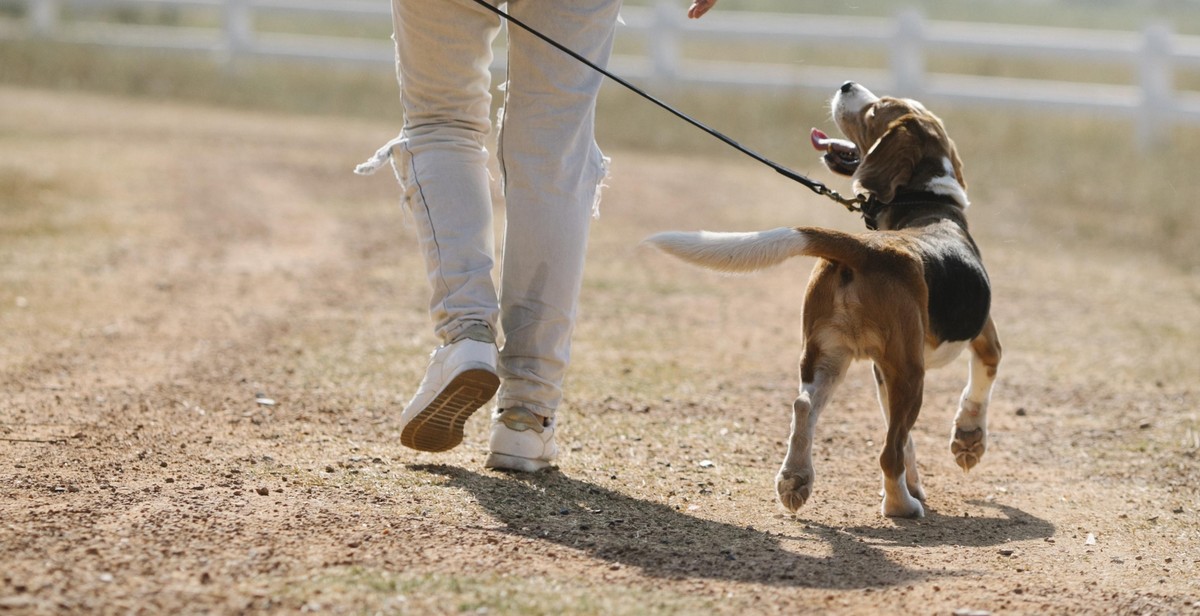
Teaching Loose Leash Walking
One of the most important skills to teach your dog is loose leash walking. It is essential for both the safety of your dog and your own comfort during walks. Here are some tips to teach your dog to walk nicely on a leash:
Stop and Go
When your dog is pulling on the leash, stop walking. This will teach your dog that pulling will not get them where they want to go. Wait for your dog to relax and release tension on the leash. When they do, start walking again. Repeat this process until your dog learns that pulling will not get them anywhere.
Change Directions
Another way to teach loose leash walking is to change directions when your dog starts pulling. This will make it difficult for your dog to continue pulling and will teach them to pay attention to you. When your dog starts pulling, abruptly turn around and walk in the opposite direction. Your dog will have to follow you and will learn to stay close to you.
Reward Good Behavior
It is essential to reward your dog when they exhibit good behavior on a leash. This can be in the form of treats, praise, or affection. When your dog walks nicely on a leash, reward them immediately. This will reinforce the behavior and make it more likely to happen again in the future.
| Do: | Don’t: |
|---|---|
| Be patient and consistent | Use a retractable leash |
| Use positive reinforcement | Yank or pull on the leash |
| Teach in a quiet, low-distraction environment | Get frustrated or angry |
Remember, teaching loose leash walking takes time and patience. Keep practicing and rewarding good behavior, and you’ll soon have a dog that walks nicely by your side.
Troubleshooting
Pulling
If your dog pulls on the leash during walks, it can make the experience frustrating and even dangerous. Here are some tips to help you address this issue:
- Stop walking if your dog pulls and wait for them to come back to you. Reward them with a treat or praise when they do.
- Use a front-clip harness or head collar to give you more control over your dog’s movements.
- Practice loose leash walking in a distraction-free environment first before moving on to more challenging areas.
- Avoid using a retractable leash, as it can encourage pulling behavior.
Distractions
Dogs can easily get distracted during walks, especially if there are other animals or people around. Here’s what you can do:
- Keep your dog on a shorter leash to minimize distractions.
- Use treats or toys to keep your dog’s attention on you.
- Avoid walking in areas with high levels of activity until your dog is better trained.
- Practice obedience training at home to reinforce your dog’s focus and attention.
Aggression
If your dog displays aggressive behavior while on a leash, it’s important to address it immediately to prevent any harm to others. Here are some steps you can take:
- Consult with a professional dog trainer or behaviorist to assess the situation and develop a training plan.
- Avoid walking your dog in areas with high levels of activity until the aggressive behavior is under control.
- Use a muzzle to prevent your dog from biting or attacking others.
- Be patient and consistent with your training, as it may take time to see improvement.
| Issue | Tips |
|---|---|
| Pulling | Stop and wait, use front-clip harness, practice loose leash walking, avoid retractable leash |
| Distractions | Keep on shorter leash, use treats or toys, avoid high activity areas, practice obedience training |
| Aggression | Consult with professional, avoid high activity areas, use muzzle, be patient and consistent with training |
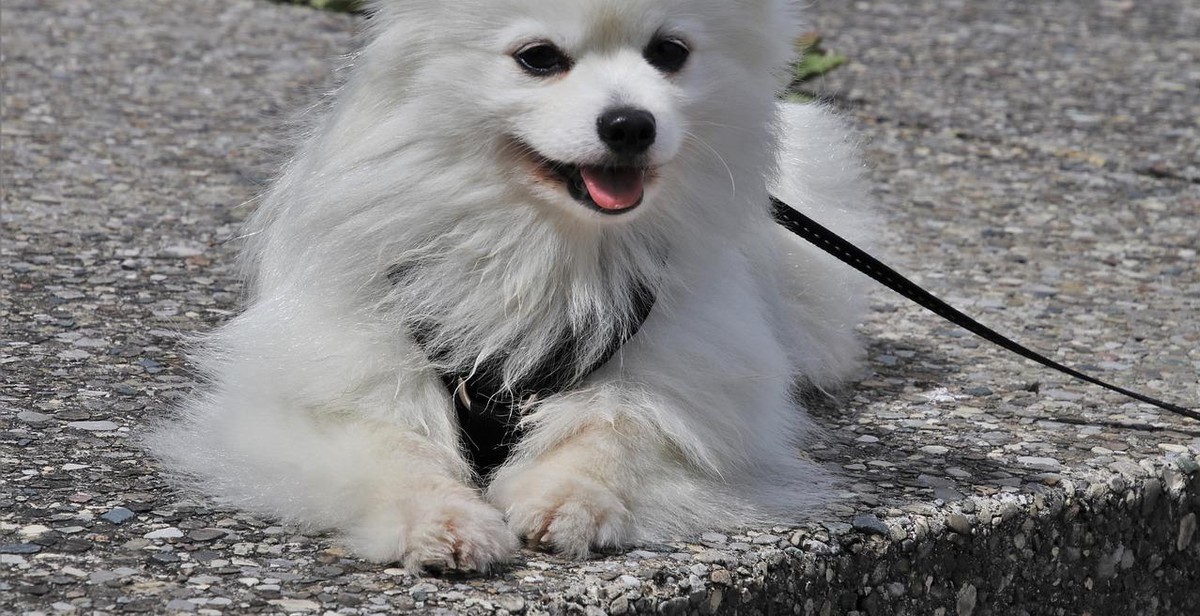
Conclusion
Training your dog to walk nicely on a leash is an essential part of responsible dog ownership. Not only does it make walks more enjoyable for both you and your furry friend, but it also ensures their safety and the safety of others around you.
Remember to always use positive reinforcement techniques when training your dog, and never resort to punishment or physical force. Consistency and patience are key, and it may take some time for your dog to fully understand what is expected of them.
Start with short training sessions and gradually increase the duration and difficulty as your dog becomes more comfortable and confident. Don’t forget to reward good behavior and always end training on a positive note.
There are also many tools and accessories available to help with leash training, such as harnesses and head collars. Be sure to choose the right equipment for your dog’s size and breed, and always supervise them during walks.
By following these tips and techniques, you can successfully train your dog to walk nicely on a leash and enjoy many happy walks together.
- Use positive reinforcement techniques
- Be consistent and patient
- Start with short training sessions and gradually increase difficulty
- Reward good behavior and end training on a positive note
- Choose the right equipment and always supervise your dog during walks
Remember, a well-trained dog is a happy and healthy dog!
